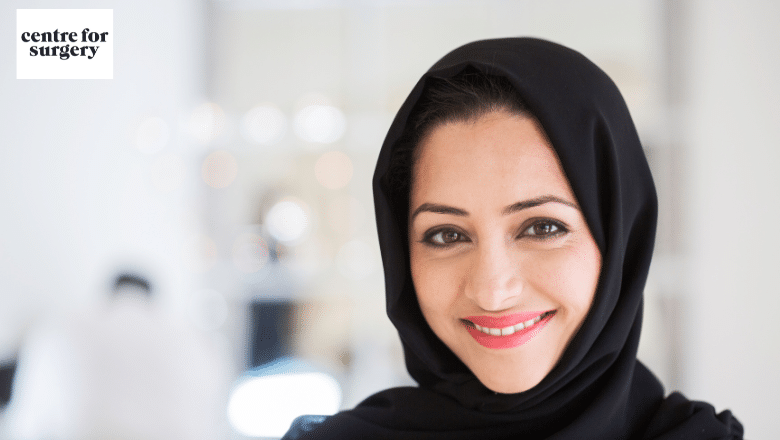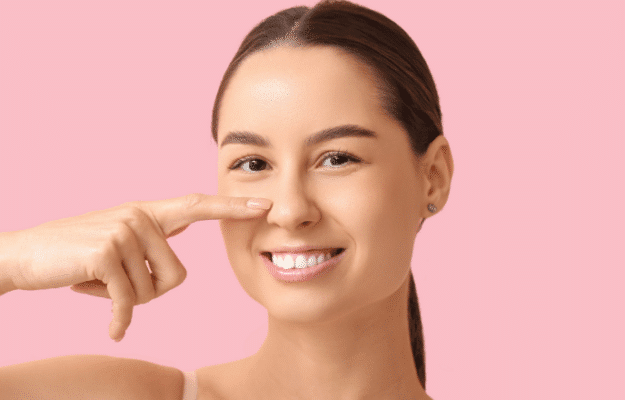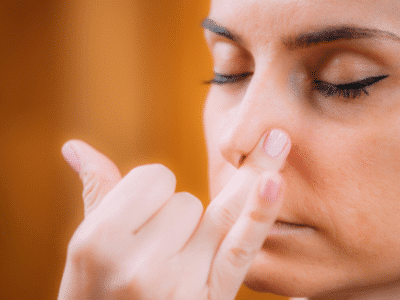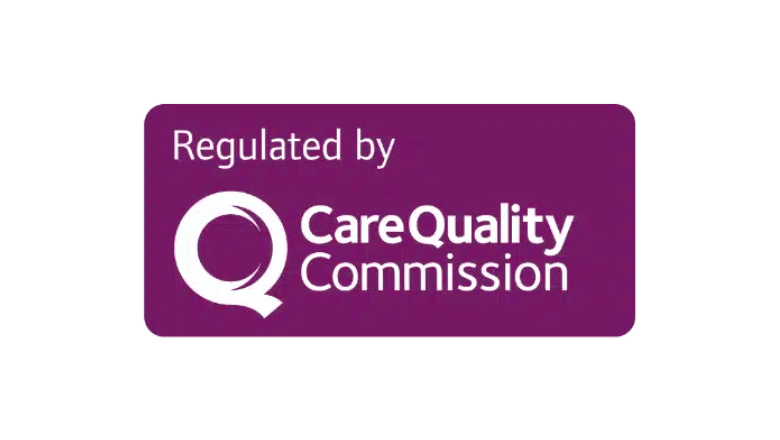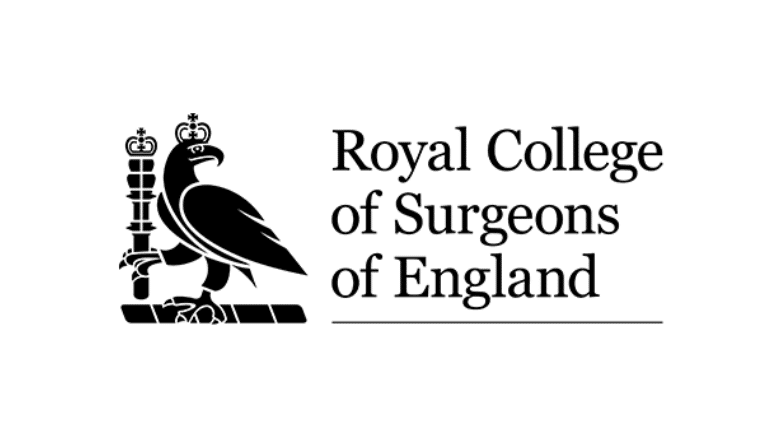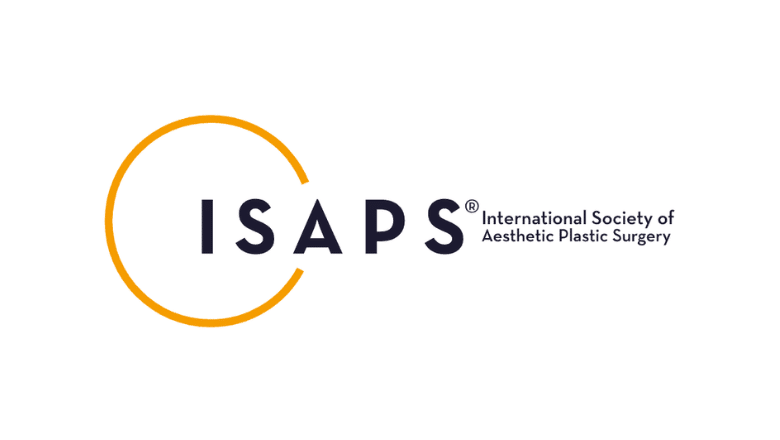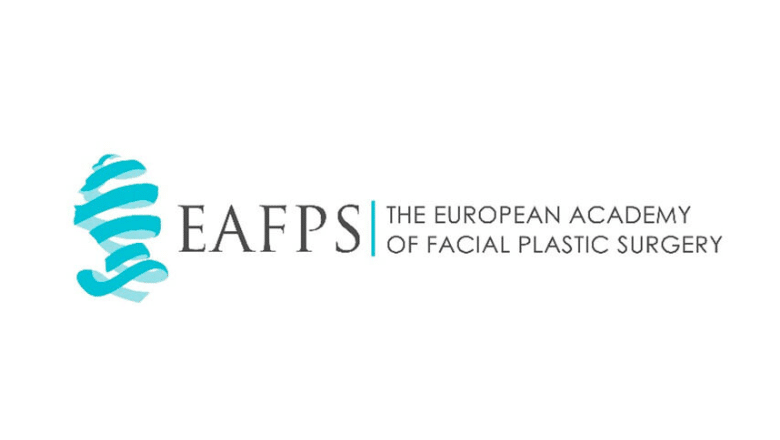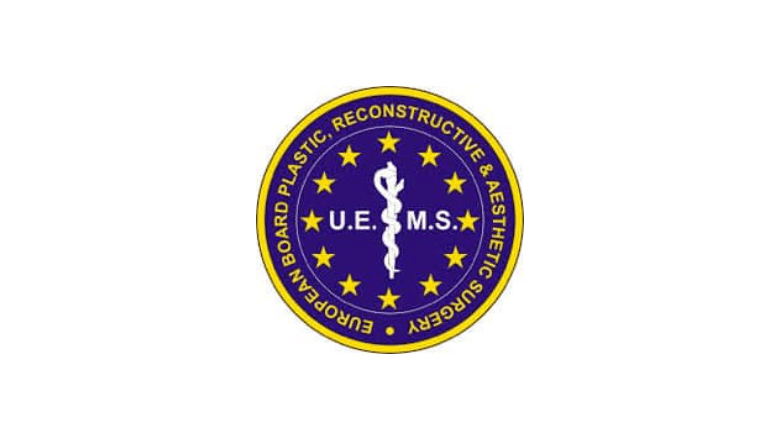Ethnic Rhinoplasty London UK

Ethnic rhinoplasty, also known as an ethnic nose job, involves performing rhinoplasty surgery on people of non-Caucasian backgrounds. As the UK becomes increasingly diverse and multicultural, many patients do not have the typical features of a Caucasian nose. Ethnic nose reshaping surgery combines tried and tested rhinoplasty techniques with specialist surgical methods designed to achieve aesthetically pleasing results for people from a wide range of ethnic backgrounds.
RELATED: Everything you need to know about ethnic rhinoplasty
Rhinoplasty surgery for non-Caucasian patients can involve a significant degree of complexity as the anatomy of the ethnic nose often differs significantly from Caucasian or European noses. Traditionally most rhinoplasty teaching and training has been focused on improving the appearance of the Caucasian nose. It is important to appreciate that rhinoplasty surgery must take into account the unique features of the ethnic nose. Ethnic rhinoplasty is designed to reshape the nose to achieve optimal aesthetic and functional results whilst preserving the anatomical features of the nose of a patient’s ethnic background.
Types of Ethnic Rhinoplasty
Most types of surgical rhinoplasty focus on achieving a better-defined nose with increased refinement. Achieving aesthetically appealing results whilst preserving nasal function is key with every nose surgery. Ethnic rhinoplasty takes into account the fact that not every patient seeks to achieve a Caucasian-looking nose. Instead, the goal is to attain a more proportionate and balanced nose which is sympathetic to a patient’s ethnic background.
All types of rhinoplasty surgery, including an ethnic nose job, focus on achieving the best results regardless of ethnic background. Every surgical plan must be customised to the needs of the individual patient. As the science of rhinoplasty surgery continues to evolve, plastic surgeons now have the advanced tools to provide meticulous surgery and attentive aftercare to treat all types of ethnic noses.
As the UK becomes increasingly diverse with people from a wide range of ethnic backgrounds, nose reshaping surgery has evolved to address features of the ethnic nose that are often not part of the standard technique for Caucasian rhinoplasty.
What is Ethnic Rhinoplasty?
Ethnic rhinoplasty is a specialised branch of nasal surgery that emphasises maintaining and respecting a patient’s cultural and ethnic identity while enhancing the appearance of the nose. This type of rhinoplasty acknowledges that individuals from different ethnic backgrounds possess distinct facial bone structures, skin types, and nasal features. Consequently, achieving a natural and harmonious result requires a nuanced understanding of these unique characteristics. Not all plastic surgeons are trained to handle the subtle variations inherent in diverse ethnicities, and without this expertise, there is a significant risk of altering the nose in a way that detracts from the person’s natural facial harmony.
Historically, the field of rhinoplasty often adopted a uniform approach, predominantly aiming to create a nose that conformed to Western European standards of beauty. This “one-size-fits-all” methodology frequently resulted in subpar outcomes for patients from non-European backgrounds. Individuals of various ethnicities who underwent such procedures sometimes ended up with unnatural-looking noses, noticeable scarring, and even functional issues like impaired breathing. These botched surgeries not only compromised the aesthetic appeal but also led to additional medical complications. As a result, many patients found themselves needing corrective surgeries, which imposed further financial burdens and extended periods of recovery.
In recent years, there has been a growing recognition of the importance of ethnic rhinoplasty. Modern techniques now focus on enhancing the nose’s appearance while preserving the distinct features that reflect a person’s heritage. Surgeons skilled in ethnic rhinoplasty work closely with patients to understand their specific cultural and aesthetic goals, ensuring that the results are both beautiful and true to their natural identity. This personalised approach helps prevent the loss of individuality and promotes greater satisfaction with the surgical outcomes.
Choosing Between Ethnic and Traditional Rhinoplasty: What’s Right for You?
Rhinoplasty remains one of the most popular cosmetic surgeries, and it’s easy to see why. The nose naturally draws attention as the most prominent feature of the face. Altering its shape or size can significantly enhance overall facial harmony, bringing different features into better balance and boosting an individual’s confidence in their everyday interactions.
When deciding between ethnic and traditional rhinoplasty, your ethnic background is crucial in determining which approach will yield the most satisfactory results. Traditional rhinoplasty is often well-suited for individuals of Western European or Caucasian heritage. This method typically focuses on refining the nose to align with certain aesthetic standards common in these populations, ensuring that the enhancements look natural and harmonious with the rest of the facial features.
However, ethnic rhinoplasty is usually the preferable option for those from African, Asian, Pakistani, Indian, or Middle Eastern backgrounds. This specialised procedure takes into account the unique structural and aesthetic characteristics associated with different ethnicities. Doing so ensures that any modifications maintain the distinctive aspects of the patient’s natural appearance. This approach enhances the nose’s appearance and preserves the individual’s cultural identity, ensuring that they still look authentically after the surgery.
What are the different types of ethnic nose shapes?
As with other aspects of facial features, the size and shape of the nose differ significantly in the general population. The vast diversity of facial appearances across continents has provided scientists with a fertile study area for many years. Although genetic factors have contributed significantly to the evolution of human anatomical features, natural selection has played a direct role in determining several aspects of physical appearance. This includes the degree of skin pigmentation and the structure of the face, which has adapted to a particular environment.
Scientists have been fascinated by the shape of the nose for hundreds of years. People have different nasal anatomy depending on which part of the world they live in. Scientific curiosity has resulted in why this occurs. Often, genetics and environmental factors play a combined role in determining the nose’s appearance.
Published studies from around the world have demonstrated that the width of the nose is strongly linked with both temperature and humidity in the natural environment. People who live in warm and humid climates are more likely to have wider noses. Those who live in colder climates are more likely to have narrow noses. Although there are significant variations and specific exceptions to this rule, this is an area of ongoing research. The shape of the nose can be determined by factors other than climate. Here, we discuss the features of noses from a particular ethnic group.
European nose
Surgery on the Caucasian nose has traditionally been where surgeons have had the most experience. Although ethnic rhinoplasty differs from surgery on a European nose, it is useful to understand the characteristic features of European noses. Caucasian noses typically have a narrow nasal bridge. People in northern Europe often have noses with wide bases combined with lips that may appear protruded. In comparison, those from southern Europe often have noses that point upwards. European noses are generally known for having both longer and slightly wider noses. As globalisation has removed barriers to travel, it has become increasingly difficult to define the typical nose shape as mixed-race noses have become more prevalent in the general population.
RELATED: How to make your nose smaller
Indian and Pakistani Nose
The Indian and Pakistani nose, like other ethnic nose types, has unique features that distinguish it from other nasal types. Here are some of the common features of the Indian and Pakistani nose:
Relatively broad nasal base
The base of the Indian and Pakistani nose can be relatively broad, with flaring nostrils that extend beyond the alar crease.
Rounded or bulbous nasal tip
The tip of the Indian and Pakistani nose is often rounded or bulbous, with relatively thick skin that can obscure the underlying cartilage structure.
Weak cartilage support
The cartilage structure of the Indian and Pakistani noses can be weaker and less defined than that of other ethnic nose types, which can make it more challenging to achieve the desired nasal shape and structure.
Prominent hump or dorsal hump
Some Indian and Pakistani noses have a prominent hump on the bridge of the nose, which can be addressed with techniques such as cartilage grafting or osteotomy (breaking of the nasal bone).
Thick nasal skin
The skin of the Indian and Pakistani nose is often thicker than that of other ethnic nose types, which can make it more challenging to achieve the definition and refinement of the nasal tip.



Every nose is unique, and these features can vary widely among individuals of Indian and Pakistani descent. A skilled and experienced surgeon will take into account the unique features of the patient’s nose and tailor the surgical approach accordingly to achieve the best possible results.
Asian nose
RELATED: Asian Rhinoplasty
The Asian nose shape describes those typically from the Far East or Central Asia. Compared with the typical Caucasian nose, Asians have broader and shorter noses that often have less projection or appear less protruded. The shape of the Asian nose will determine the objectives of the procedure. Those of a Caucasian background most commonly seek rhinoplasty surgery to reduce the nose size. In comparison, Asians prefer to augment the structure of the nose.
RELATED: What is Asian blepharoplasty?
African nose
The African nose is typically characterised by a wide nasal bridge, a low nasal bridge, and wide and flared nostrils. The nasal tip is often rounded, and the nasal base is broad. Additionally, the alar (or nostril) rims tend to be thick, and the columella (the tissue between the nostrils) is often thick and projected. These are general characteristics; not all African noses will have these features.
Middle Eastern nose
RELATED: Middle Eastern Rhinoplasty
A prominent dorsal hump on the nasal bridge most commonly defines the Middle Eastern nose. The nasal tip often appears broad and appears to be drooping. In many cases, those of Middle Eastern descent may have a similar nose shape to those of African backgrounds. Middle Eastern noses may also have a flashy and rounded tip, also known as a bulbous tip.
Ethnic rhinoplasty surgery for the Middle Eastern nose is designed to remove or reduce the dorsal hump and reduce the size of the nasal tip with its elevation.
If you would like to learn how an ethnic nose job can help you achieve a beautiful-looking nose with the preservation of the facial features that characterise your ethnic background, give us a call today to schedule an in-person consultation with a specialist ethnic rhinoplasty surgeon.
How does ethnic rhinoplasty differ from Caucasian rhinoplasty?
Ethnic rhinoplasty differs from Caucasian rhinoplasty in several ways. One of the main differences is that ethnic noses often have a thicker skin type, making it more challenging to achieve the desired shape and definition. Additionally, ethnic noses may have different underlying bone and cartilage structures, which can also affect the outcome of the surgery. Ethnic rhinoplasty requires a more cautious and individualised approach to ensure that the final result looks natural and preserves the patient’s ethnic identity.
Indian and Pakistani Rhinoplasty
Indian or Pakistani rhinoplasty, or South Asian rhinoplasty, is a specialised surgical procedure tailored to address the unique nasal features commonly found in individuals of Indian or Pakistani descent. This nose surgery focuses on enhancing the patient’s facial harmony and aesthetics while preserving their ethnic identity and distinctive facial features.
During an Indian or Pakistani rhinoplasty, the surgeon may concentrate on the following objectives:
Correct a nose hump
Reducing or removing the nasal hump can create a smoother and more aesthetically pleasing nose profile, leading to improved facial harmony.
Fix a droopy nasal tip
Elevating the nose tip can create a more refined and defined appearance, giving the patient a more aesthetically pleasing nose shape that suits their facial proportions.
Narrow the nose
By reshaping the nasal bones and cartilage, the surgeon can achieve a narrower nose that complements the patient’s other facial features and contributes to a balanced appearance.
Preserve the ethnic identity
An essential aspect of Indian or Pakistani rhinoplasty is maintaining the patient’s unique cultural characteristics while making the desired changes. A skilled surgeon will ensure that the outcome of the surgery respects the patient’s ethnic background and enhances their natural beauty.
Middle Eastern Rhinoplasty
Middle Eastern rhinoplasty, also known as Middle Eastern nose job or ethnic rhinoplasty, is a specialized surgical procedure tailored to address the unique nasal features commonly found in individuals of Middle Eastern descent. This nose surgery aims to enhance the patient’s facial harmony and aesthetics while preserving their ethnic identity and distinctive facial features.
During a Middle Eastern rhinoplasty, the surgeon may focus on the following objectives:
Flatten a dorsal hump
Reducing or removing the nasal hump can create a smoother and more aesthetically pleasing nose profile, leading to improved facial harmony.
Straighten the nose
By addressing any deviations or crookedness, the surgeon can achieve a straighter nose that complements the patient’s other facial features and contributes to a balanced appearance.
Lift the nose tip upwards
Elevating the nose tip can create a more refined and defined appearance, giving the patient a more aesthetically pleasing nose shape that suits their facial proportions.
Preserve the ethnic identity
A crucial aspect of Middle Eastern rhinoplasty is maintaining the patient’s unique cultural characteristics while making the desired changes. A skilled surgeon will ensure that the outcome of the surgery respects the patient’s ethnic background and enhances their natural beauty.
African rhinoplasty or African nose job
An African rhinoplasty addresses the unique features commonly found in African noses while preserving the patient’s ethnic identity. This procedure is tailored to the individual’s specific needs and goals, considering their facial proportions and desired aesthetic outcome. Some key objectives of an African rhinoplasty include:
Increasing the height of a flat nose
Elevating the nasal bridge can create a more balanced profile and enhance overall facial harmony.
Enhancing the projection of the nose
Improving the projection of the nose can create a more defined and prominent appearance, adding character to the patient’s face.
Making the nostrils narrower
Reducing the width of the nostrils can result in a more refined and proportional nose shape that complements the patient’s other facial features.
Sculpting the nose tip
Reshaping the nose tip can help achieve a more aesthetically pleasing and defined appearance, improving the overall contour of the nose.
Preserving ethnic identity
It is crucial to maintain the distinctive features that define the patient’s ethnic background while making the desired improvements. An experienced surgeon understands the importance of preserving the patient’s cultural heritage and will approach the procedure with that in mind.
Asian rhinoplasty
Asian rhinoplasty is a specialised nose surgery that addresses the unique features commonly found in Asian noses while preserving the patient’s ethnic identity. This procedure is tailored to the individual’s needs and goals, considering their facial proportions and desired aesthetic outcome. Some key objectives of an Asian rhinoplasty include:
Increasing the projection of the nose bridge
Elevating the nasal bridge can create a more balanced profile and enhance the overall facial harmony, providing a more defined and prominent appearance.
Narrowing the nose
By reducing the width of the nose, the surgeon can create a more refined and proportional nose shape that complements the patient’s other facial features.
Correcting nostril flaring
Addressing nostril flaring can lead to a more aesthetically pleasing and harmonious appearance, improving the overall contour of the nose.
Supporting the nasal structures with cartilage grafts
Asian noses often have weaker cartilage, which can result in a lack of support and structure. The surgeon can strengthen and support the nasal structures by using cartilage grafts, leading to a more defined and stable nose shape.
Preserving ethnic identity
It is essential to maintain the distinctive features that define the patient’s ethnic background while making the desired improvements. An experienced surgeon understands the importance of preserving the patient’s cultural heritage and will approach the procedure with that in mind.
What nose issues can an ethnic nose job target?
Rhinoplasty surgery was traditionally based on the features of the European nose. This is probably because most patients were originally from a Caucasian background. Rhinoplasty techniques, therefore, evolved to meet the needs of the Caucasian patient. This has now dramatically changed, and the expert rhinoplasty surgeon must now be equally familiar with ethnic nose job surgery customised to those from a wide range of different ethnic backgrounds. Ethnic rhinoplasty surgery has become increasingly available, and society has embraced surgery’s benefits to improve physical appearance. Having a nose job is no longer considered excessively vain, with increasing numbers of men and women choosing to have ethnic rhinoplasty surgery in London. In the UK, non-Caucasian patients form our largest group of rhinoplasty patients, which makes us one of the most experienced centres in London for ethnic nose job surgery. As the procedure’s popularity has increased, our expert surgeons continue refining their surgical knowledge and skills to ensure each patient achieves natural-looking results that are in harmony with their ethnicity.
As the differences in nose shapes become better understood, expert facial plastic surgeons continue to build their expertise with ethnic rhinoplasty. A significant challenge of any ethnic rhinoplasty procedure is to create an aesthetically appealing result without disturbing the intricate balance of facial features that characterise a patient from a particular ethnic background.
Ethnic rhinoplasty is designed to address the four main nose concerns, including:
- Size
- Shape
- Angle
- Nasal bump
Ethnic rhinoplasty addresses common issues affecting the ethnic nose, including a wide nasal base, white bridge, excessively large or poorly defined tip, short distance between upper lip and nose, droopy tip, enlarged nostrils, nasal asymmetry or a crooked nose. As with any type of rhinoplasty surgery, functional symptoms such as disordered breathing can be corrected as part of a combined ethnic septorhinoplasty procedure.
What is the ideal ethnic nose shape?
The shape of the nose and its relationship with the overall anatomy of the face is paramount for ethnic nose job Surgery. The nose is the most dominant part of the face, so it must still appear balanced with the overall facial features. This is why a highly skilled surgeon must undertake ethnic rhinoplasty to ensure that optimum results appear natural on a person from a particular ethnic background. Most surgeons would agree that face proportions are not the only benchmark of beauty. They can, however, be helpful when planning the procedure. Rhinoplasty surgical techniques will take into account facial proportions. Research studies have shown the aesthetic ideal to be an oval-shaped face with a 3:4 height-to-width ratio. Dividing the human face into horizontal thirds is customary, although these are rarely the same. In people from Caucasian backgrounds, the other side of the face is often larger than the middle third, although both areas are smaller than the lower third. In Asian people, the upper third is smaller than the middle third, which has equal dimensions to the lower third of the face. Some also subdivide the lower third of the face into three smaller areas which cover the chin and upper and lower lips.
The optimum size and shape of the nose should ideally appear in proportion with the other facial features, including the chin, lips, eyes, cheeks and forehead. Meticulous planning and preparation for ethnic rhinoplasty take these factors into account. Many patients often desire a look that does not look too Caucasian. Most Asian patients prefer to look Eurasian as opposed to Caucasian after ethnic rhinoplasty surgery. This helps to achieve natural-looking results that respect their ethnic background.
What are the benefits of an ethnic rhinoplasty?
Ethnic rhinoplasty is designed to help people regain their self-confidence and improve their emotional well-being. When surgery is not planned appropriately so that existing ethnic facial features are not considered, the surgical result could be unsatisfactory. This is most common when an inexperienced surgeon fails to understand the particular goals of an ethnic nose job. There is no one-size-fits-all approach when it comes to ethnic rhinoplasty. Successful outcomes are more likely when your surgeon clearly understands what you are trying to achieve and has detailed knowledge of the anatomy of the ethnic nose and how to make it appear in proportion with the rest of the facial features.
What does ethnic nose surgery involve?
In many ways, ethnic rhinoplasty uses the same principles as conventional rhinoplasty surgery. The procedure is most commonly carried out under general anaesthesia; the incisions are placed exactly as with Caucasian rhinoplasty. The incisions can be located either on the columella between the nostrils or entirely inside the nostrils, also known as closed or endonasal rhinoplasty. The precise technique chosen will depend on the outcomes of the clinical examination at your in-person consultation.
Compared with traditional rhinoplasty surgery, an ethnic rhinoplasty takes longer to perform, although the procedure outcomes are equally impressive. Most ethnic nose surgery procedures involve surgically narrowing the nostrils or increasing the projection of the nasal tip. Nasal tip enhancement often requires a structural graft to augment the news. This is most commonly when septal cartilage is removed during the procedure. Other areas include the ear or rib cartilage. Donor rib or synthetic substitutes can be used in certain cases.
The experience and skills of your nose surgeon determine ethnic rhinoplasty results. It is crucial to carry out detailed research to find the best surgeon. Call us today to find out why Centre for Surgery is the UK’s leading clinic for ethnic rhinoplasty. Not all surgeons are trained in ethnic nose surgery. Our highly skilled surgeons are familiar with the nuances of ethnic noses and know how to achieve natural-looking results. Skilful placement of incisions requires extensive experience. Accuracy and precision are fundamental to achieving the best results. An experienced surgeon will assess the thickness and quality of your skin when deciding where to position the incisions. This is a very important aspect as certain skin types, particularly darker-skinned people, could be more prone to developing excessive scarring than lighter skin types.
Ethnic nose surgery takes approximately 2 to 3 hours under general anaesthesia. If you have the closed technique, incisions are made within the nostrils to access targeted nose areas for surgical correction. The open rhinoplasty method involves an incision at the columella between the nostrils beneath the tip of the nose. The surgeon will then gently elevate the skin of the nose back to expose the underlying cartilage and bony framework. The surgeon will then expertly reshape and redefine the nose, which may require structural cartilage grafts to stabilise the nasal framework with surgical stitches. Immediately after the procedure, swelling is expected to be experienced, affecting the nose, cheeks, and lower eyelids. Bruising may also be present, particularly if the bones have had to be fractured to narrow the nasal bridge. All types of surgical rhinoplasty, whether for Caucasian or ethnic noses, involve a similar recovery period determined by the extent of surgical correction undertaken.
Recovery and healing after ethnic rhinoplasty
We recommend that patients take one week off work to allow localised bruising and initial swelling to settle. It is usual for crusting and scabs to develop during the first week, which should disappear ten days after the procedure. Rhinoplasty surgery is not typically associated with significant pain or discomfort. Patients may comfortably work from home after a few days if they can. You will be seen one week after your procedure to remove the nasal splint. Any nasal crusts will be gently suctioned, and the nose will be cleaned with sterile saline. Nasal packing is not routinely required after this procedure. You will be allowed to blow your nose after the first 24 hours, and there is no restriction on what you can and cannot eat and drink. You should avoid strenuous exercise, including going to the gym for six weeks after the surgery, to prevent prolonged swelling from occurring.
Recovery timeline after ethnic nose surgery
The recovery timeline after ethnic nose surgery can vary depending on the extent of the procedure, the surgical technique used, and the patient’s overall health. It’s essential to follow the post-operative instructions provided by the surgeon to ensure proper healing and minimize any risks and complications associated with the surgery. Here is a detailed recovery timeline with headings week by week:
Week 1:
During the first week after ethnic nose surgery, patients will likely experience pain, swelling, and bruising around the nose and eyes. The surgeon will usually prescribe pain medication to manage any discomfort, and patients may be advised to keep their heads elevated to reduce swelling. It’s important to avoid strenuous activities, including bending over or lifting heavy objects, and to avoid blowing your nose during this time.
Week 2:
During the second week, patients may still experience some discomfort and swelling, but it should begin to subside. The surgeon may remove splints or dressings from the nose, and patients may be advised to gently clean the incision sites. It’s still essential to avoid strenuous activities or anything that could cause the nose to become injured or bumped.
Week 3-4:
By the third and fourth week, most patients can return to work or school, but they may still experience some swelling and bruising. The surgeon may advise patients to continue cleaning the incision sites and may recommend using saline solution to help flush out any debris. Patients should continue to avoid strenuous activities or contact sports and avoid blowing their noses.
Week 5-6:
By the fifth and sixth weeks, most patients should begin to see significant improvement in their appearance, and any remaining swelling should continue to subside. Patients may be advised to continue using saline solution to help flush out any debris, and the surgeon may recommend beginning light exercises such as walking or gentle yoga. However, avoiding strenuous activities or anything that could cause the nose to become injured or bumped is still essential.
Week 7-8:
By the seventh and eighth weeks, most patients should see significant improvements in their appearance, and any remaining swelling should continue to subside. The surgeon may clear patients for more strenuous activities, but it’s still essential to be cautious and avoid anything that could cause the nose to become injured or bumped.
Week 9-10:
By the ninth and tenth week, most patients should see significant improvements in their appearance, and any remaining swelling should be minimal. The surgeon may advise patients to continue to be cautious and avoid strenuous activities or anything that could cause the nose to become injured or bumped. Patients may also be advised to continue using saline solution to help flush out any debris.
Can You Combine Ethnic Rhinoplasty With Other Procedures?
Ethnic rhinoplasty is a cosmetic surgery designed to reshape the nose while preserving its unique ethnic features. It can be combined with other procedures, depending on the individual case and the patient’s goals. Here are some procedures that can be combined with ethnic rhinoplasty:
Chin augmentation
This procedure involves enhancing the chin’s size and shape to balance out the facial features. Combining ethnic rhinoplasty with chin augmentation can provide more harmonious facial proportions.
Blepharoplasty
This procedure is performed to improve the appearance of the eyelids. Combining it with ethnic rhinoplasty can create a more youthful and refreshed appearance.
Facelift
A facelift is a surgical procedure that can address sagging skin and deep wrinkles on the face and neck. Ethnic rhinoplasty can be combined with a facelift for a more comprehensive facial rejuvenation.
Lip augmentation
This procedure involves enhancing the size and shape of the lips. Combining it with ethnic rhinoplasty can create a more balanced and attractive facial profile.
Anti-wrinkle injections and fillers
Wrinkle-relaxing injections and fillers are non-surgical procedures that can reduce the appearance of wrinkles and add volume to the face. They can be combined with ethnic rhinoplasty for a more youthful and rejuvenated appearance.
How much does ethnic rhinoplasty cost?
The cost of ethnic rhinoplasty surgery will depend on several factors, including the extent of surgical correction required and the type of surgical approach. Once you have had an in-person consultation, you will receive a detailed quote from your dedicated patient coordinator. This will include the surgeons, anaesthetists, and facility fees. Postoperative aftercare visits are included in the cost of your surgery.
RELATED: How much does a nose job cost?
When choosing the best surgeon for ethnic no surgery, you should never forget that the skills and experience of your surgeon have a more significant impact than ethnic rhinoplasty prices. Two-for-one offers, time-limited discounts and other enticing deals should be a red flag. In many cases, patients may be at higher risk of developing an unsatisfactory result. They may require revision surgery in the future, which ends up costing more with extra time off work and increased stress. It is better to have one surgical procedure carried out by an experienced and highly ethical surgeon committed to providing the highest standards of medical care before, during and after your procedure.
Further reading on ethnic nose jobs
Is ethnic rhinoplasty worth it?
Whether or not ethnic rhinoplasty is worth it is a personal decision that depends on the individual’s goals and motivations for seeking the surgery. Some people may choose ethnic rhinoplasty to address functional issues such as difficulty breathing or to correct a deformity, while others may seek surgery for cosmetic reasons.
It is essential to have realistic expectations and understand that the results of ethnic rhinoplasty may not be the same as those achieved in a Caucasian nose, as the characteristics of ethnic noses are different. It’s also essential to research and choose a well-trained, experienced surgeon who has a good track record with ethnic rhinoplasty.
Why choose Centre for Surgery for ethnic rhinoplasty?
Centre for Surgery is the leading cosmetic surgery clinic in London and is home to some of the best ethnic nose surgeons in the UK. Our consultant plastic surgeons have a wealth of skills and experience and are dedicated to providing the highest standards of patient care.
Each ethnic nose surgery is customised to the needs of the individual patient, considering their specific ethnic background. We focus on producing natural-looking rhinoplasty results for men and women. Our surgeons have expertise in the full range of rhinoplasty techniques, including septorhinoplasty, septoplasty, open and closed rhinoplasty, ultrasonic rhinoplasty and revision rhinoplasty.
Our state-of-the-art Baker Street clinic in Marylebone is purpose-built for precision nose surgery undertaken as a day case, allowing you to go home the same day and recover in the comfort of your home.
Our friendly and knowledgeable team of Patient coordinators are happy to assist you with any questions you may have when considering ethnic rhinoplasty surgery. You can call us today on 020 7993 4849 or complete the contact form below to schedule an in-person consultation with an expert consultant plastic surgeon experienced in ethnic nose surgery.
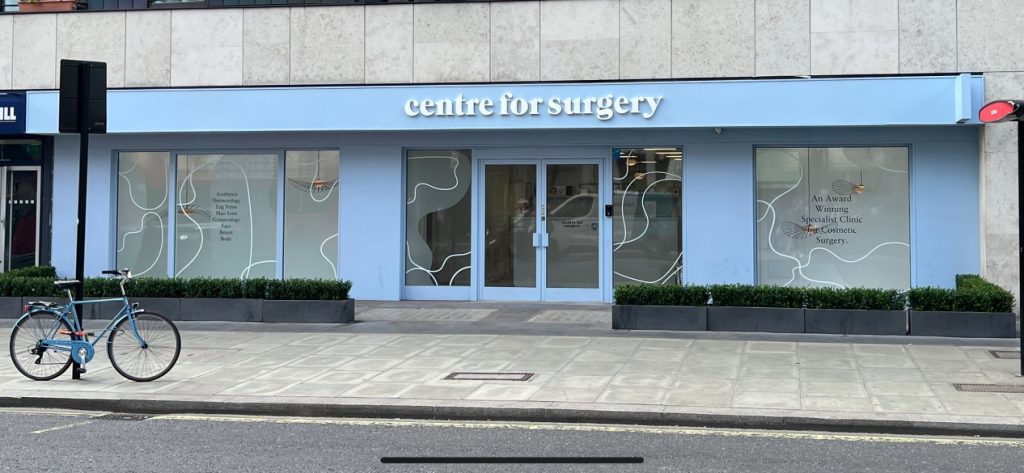
FAQs
-
Will a “nose job” look natural if I’m black, Asian, Pakistani, Indian, or Middle-Eastern?If you're considering a rhinoplasty and belong to a Black, Asian, Pakistani, Indian, or Middle-Eastern background, you might wonder whether the procedure can yield a natural appearance. The answer is yes, provided you choose a plastic surgeon who specialises in ethnic rhinoplasty. This specialised field understands the unique aesthetic and anatomical features associated with different ethnicities and tailors the surgical approach accordingly.
Each ethnicity presents distinct characteristics that influence the surgical process. For instance, individuals of African and Asian descent often have a broader nasal bridge, more soft tissue, and less cartilage at the nasal tip. A competent ethnic rhinoplasty surgeon recognises these variations and employs techniques that enhance the nose's appearance while maintaining its natural harmony with the rest of the facial features. This careful consideration ensures that the results are not only aesthetically pleasing but also respectful of your inherent facial structure.
It's important to avoid an overly drastic transformation that can lead to an unnatural look. Nobody desires a nose that appears too narrow or a tip that is excessively refined, resulting in a face that looks out of proportion. During your initial consultation, an experienced ethnic rhinoplasty surgeon will likely use computer-generated imaging to show you potential outcomes. This visual tool helps both you and the surgeon to align your expectations and ensures that the planned modifications will achieve the look you desire without compromising the nose's authenticity. -
What are the features of an Indian or Pakistani nose?An Indian or Pakistani rhinoplasty is designed to address the unique features of these ethnic noses while preserving the patient's cultural identity. The primary goal of this type of nose job is to enhance the individual's facial features in a way that is natural and harmonious with the rest of the face. Some key objectives of an Indian or Pakistani rhinoplasty include:
Reducing the high nose bridge: By lowering the high nasal bridge, a more balanced and aesthetically pleasing profile can be achieved.
Narrowing the broad nasal width: Adjusting the width of the nose can create a more refined and proportional appearance, enhancing the overall facial harmony.
Smoothing the nasal bump or hump: Addressing the prominence of the nasal hump can result in a smoother and more streamlined nasal profile.
Lifting and refining the drooping nose tip: By elevating and adding definition to the drooping nose tip, a more balanced and attractive nose shape can be achieved.
Preserving ethnic identity: It is important to maintain the unique features that define the patient's ethnic background while making the desired improvements.
To achieve the best results, it is essential to find a skilled and experienced surgeon who understands the distinct characteristics of Indian or Pakistani noses and can perform a rhinoplasty that enhances the patient's features while preserving their cultural heritage. By choosing a surgeon who specializes in ethnic rhinoplasty, patients can ensure they receive a personalized treatment plan tailored to their specific needs and aesthetic goals. -
What are the features of a Middle Eastern nose?A Middle Eastern rhinoplasty is a specialized procedure designed to address the distinct characteristics of Middle Eastern noses while maintaining the patient's ethnic heritage. The primary goal of this type of nose job is to enhance the individual's features in a way that looks natural and harmonious with the rest of the facial structure. Some key objectives of a Middle Eastern rhinoplasty include:
Reshaping the long droopy nose: By lifting and refining the droopy nose tip, a more balanced and aesthetically pleasing appearance can be achieved.
Smoothing the nasal hump: Reducing the prominence of the nasal hump can create a more harmonious and smoother nasal profile.
Straightening the nose: Addressing any crookedness or deviation in the nose can result in a more symmetrical and aesthetically pleasing appearance.
Improving the projection of the nose tip: By refining the nose tip's projection, the overall shape and contour of the nose can be enhanced.
Adjusting thick nasal skin: Thinning or sculpting the thick nasal skin can help improve the overall shape and contour of the nose, resulting in a more refined appearance.
Correcting a deviated septum: In cases where there is a deviated septum, the surgeon may perform a septoplasty to correct the issue, improving both the appearance and functionality of the nose.
It is crucial to find a skilled and experienced surgeon who understands the unique characteristics of Middle Eastern noses and can perform a rhinoplasty that enhances the patient's features while preserving their ethnic identity. By choosing a surgeon who specializes in ethnic rhinoplasty, patients can ensure that they receive a personalized treatment plan tailored to their specific needs and goals. -
What are the features of an African nose?An African rhinoplasty is a specialized procedure that aims to address the unique features of an African nose while preserving its ethnic identity. This procedure can help patients achieve a more refined and balanced appearance while maintaining their cultural heritage. Some of the key goals of an African rhinoplasty include:
Narrowing the nostrils: By reducing the width of the nostrils, the overall appearance of the nose can be made more proportionate to the patient's face.
Narrowing the nose bridge: Reshaping the wide and low nasal bridge can result in a more aesthetically pleasing and harmonious look.
Refining the nasal tip: A wide and bulbous nasal tip can be reshaped to create a more defined and elegant appearance.
Reducing fatty tissue: By removing excess fatty tissue within the nose, the overall contour and shape of the nose can be improved.
It is important to note that ethnic African rhinoplasty is a delicate procedure that requires a skilled and experienced surgeon who understands the unique characteristics of African noses. The goal is to enhance the patient's features while preserving the ethnic identity and ensuring a natural-looking result. -
What are the features of an Asian nose?An Asian rhinoplasty is a specialized procedure tailored to address the unique features of Asian noses while preserving their ethnic identity. The primary goal of this procedure is to enhance the patient's features while maintaining a natural-looking result that complements their facial structure. Some of the key objectives of an Asian rhinoplasty include:
Augmenting the nose bridge: By increasing the height and projection of the low and flat nose bridge, a more balanced and harmonious facial appearance can be achieved.
Refining the nose tip: Reshaping the wide and rounded nose tip can result in a more defined and aesthetically pleasing look.
Reducing the thickness of the nose skin: By addressing the thick skin of the nose, the overall contour and shape can be improved, resulting in a more refined appearance.
Removing excess soft tissue: Eliminating excess soft tissue within the nose can help enhance the overall shape and contour.
Narrowing the nostrils: Resizing the wide nostrils can create a more proportionate and balanced look.
Strengthening the septum and cartilage: By reinforcing the weak septum and cartilage, the structure of the nose can be improved, leading to a more defined and projected appearance.
Cartilage grafting: In some cases, cartilage grafting may be necessary to achieve the desired projection and shape. -
What are some special techniques used for an ethnic rhinoplasty?Ethnic rhinoplasty involves a range of specialised techniques designed to address the unique anatomical features associated with different ethnic backgrounds. These methods take into consideration genetic variations in bone structure, skin thickness and elasticity, cartilage density and distribution, as well as the potential for scarring. Skilled surgeons customise each procedure to suit the individual patient, often combining multiple strategies to achieve the most harmonious and natural-looking results.
One of the primary considerations in ethnic rhinoplasty is minimising visible scarring, which is particularly important for patients with darker skin tones where scars can be more pronounced. To achieve this, many surgeons prefer performing a closed rhinoplasty. This technique involves making all incisions inside the nose, thereby eliminating any external scars and maintaining the natural appearance of the nasal area.
Patients from certain ethnic backgrounds may present with thicker skin envelopes, which can pose challenges when attempting to refine and reduce the nose. Aggressive removal of skin and tissue in these cases can lead to an asymmetrical or poorly defined nasal structure. Instead, surgeons focus on reshaping the nasal cartilage using grafts, implants, and specialised suturing techniques. These methods allow for precise modifications that enhance the nose’s shape without compromising its integrity or balance with the rest of the face.
In some instances, dermal fillers are utilised both during and after the ethnic rhinoplasty procedure. These fillers can help lift the tip of the nose, enhance areas surrounding the nasal structure, and correct humps or bumps along the bridge near the browline. This non-surgical adjunct can provide additional contouring and refinement, contributing to a more aesthetically pleasing outcome.
Furthermore, chin augmentation is often performed in conjunction with ethnic rhinoplasty to achieve better facial harmony and alignment. By enhancing the chin, whether through the injection of dermal fillers or the placement of a permanent biocompatible implant, the overall profile of the face is improved. This simultaneous approach ensures that the nose and chin work together to create a balanced and proportionate facial appearance. -
Is Ethnic Rhinoplasty More Dangerous Than Traditional Rhinoplasty?Ethnic rhinoplasty is not inherently more risky than traditional rhinoplasty. The primary concern lies in selecting a surgeon who does not have expertise in ethnic rhinoplasty, which can increase the likelihood of complications or unsatisfactory outcomes. When performed by a qualified and experienced surgeon specialised in ethnic rhinoplasty, the procedure carries the same level of safety as traditional rhinoplasty. The most significant risks associated with any rhinoplasty procedure involve general anaesthesia, but thorough preoperative health screenings help mitigate these dangers. To ensure a safe and successful surgery, it is essential to conduct thorough research and choose a surgeon who is well-versed in the specific techniques required for ethnic rhinoplasty. By doing so, patients can achieve their desired results without facing additional risks based on their ethnicity.
-
How long does ethnic rhinoplasty last?The longevity of ethnic rhinoplasty results can vary depending on a variety of factors, including the patient's age, skin type, and the specific techniques used during the surgery. However, generally speaking, the results of ethnic rhinoplasty can last for many years or even a lifetime.
It's important to note that while the initial results of the surgery can be seen immediately after the procedure, it can take several months for the final results to fully develop. During this time, the nose will continue to heal and settle into its new shape. Patients will need to be patient and follow their surgeon's post-operative instructions to ensure proper healing and the best possible outcome.
Additionally, the longevity of the results can be affected by lifestyle factors, such as smoking or exposure to the sun. Therefore, patients should take steps to maintain their overall health and protect their skin from sun damage to help ensure long-lasting results. -
Is ethnic nose surgery painful?Ethnic nose surgery, like any other surgical procedure, can involve some discomfort and pain during the recovery period. However, the level of pain and discomfort varies from person to person and can depend on the extent of the surgery, the patient's pain threshold, and the surgical technique used.
During the procedure, the patient is typically under general anaesthesia, so they will not experience any pain or discomfort. However, after the surgery, the patient may experience pain, swelling, and bruising around the nose, which can last for several days or weeks.
To manage pain and discomfort, the surgeon will usually prescribe pain medication to help alleviate any discomfort. Patients may also be advised to keep their heads elevated to reduce swelling and use ice packs to alleviate discomfort.
It is important to follow the post-operative instructions provided by the surgeon to ensure proper healing and minimise pain and discomfort. Patients are typically advised to avoid strenuous activities, blowing their nose, and smoking for several weeks after surgery.
It's worth noting that ethnic nose surgery can be a complex procedure, and it's important to choose an experienced and qualified surgeon to minimise any risks and complications associated with the surgery. Patients should also have a clear understanding of the potential risks and benefits of the procedure before undergoing surgery. -
Is it okay to sniff after an ethnic nose job?After an ethnic rhinoplasty, it is generally advised that patients avoid sniffing forcefully through their nose for several weeks to help promote proper healing and to avoid damaging the delicate tissues inside the nose. Sniffing forcefully can create a vacuum effect in the nose, which can interfere with the healing process, cause bleeding, and affect the final result of the surgery.
Instead, patients may be instructed to breathe through their mouth during the first few weeks after surgery and to use a saline nasal spray to help keep the inside of the nose moist and promote healing. Additionally, patients may be advised to avoid blowing their nose for several weeks after surgery, as this can also cause bleeding and interfere with proper healing.
It's important to follow your surgeon's post-operative instructions carefully, including any instructions regarding nose blowing or sniffing, to help ensure optimal healing and the best possible outcome. If you have any concerns or questions about your recovery after an ethnic rhinoplasty, it's important to contact your surgeon for guidance and advice. -
How long does ethnic rhinoplasty take to heal?The healing time after ethnic rhinoplasty can vary depending on several factors, including the extent of the surgery, the techniques used, and the individual patient's healing ability. In general, however, patients can expect a recovery period of several weeks to several months.
During the first few days after surgery, patients may experience some discomfort, swelling, and bruising around the nose and eyes. They may also have a splint on the nose to help support its new shape and protect it during the healing process. It's important to follow the surgeon's post-operative instructions carefully, including keeping the head elevated, taking prescribed medications, and avoiding strenuous activities or heavy lifting.
After the first week, the splint will typically be removed, and patients may be able to return to work or other non-strenuous activities, though some swelling and bruising may still be present. The majority of the swelling should subside over the following weeks, but it may take several months for the nose to fully heal and settle into its new shape.
It's important to note that each patient's recovery is unique, and some patients may experience a longer or shorter recovery period. It's also essential to attend all post-operative appointments with the surgeon and to follow their instructions carefully to help ensure optimal healing and the best possible outcome. -
Does Healing Take Longer After an Ethnic Rhinoplasty?Healing after an ethnic rhinoplasty may take slightly longer compared to traditional rhinoplasty, but the difference is generally minimal. The variation in nasal tissue thickness among different ethnicities can result in a bit more swelling that lasts slightly longer. Despite this, most patients, regardless of their ethnic background, can expect to resume normal activities and appear presentable in public approximately two weeks after the surgery. To reduce swelling and bruising, it is advisable to keep the head elevated, apply ice or cold compresses, and avoid consuming salty foods. While the nose may continue to refine and settle into its final shape over the course of a year, the majority of patients are satisfied with their results by the three-month mark and feel confident about their new appearance during follow-up appointments around the one-month post-operation stage.
-
Will the tip of my nose drop after ethnic rhinoplasty?After an ethnic rhinoplasty, the shape and position of the nose can change due to swelling and the healing process. In some cases, it is possible for the tip of the nose to appear to drop slightly during the healing process, but this is not always the case.
During the first few weeks after surgery, it's common for the nose to be swollen, and the skin and soft tissues of the nose can shift as they heal. This can sometimes cause the appearance of the nose to change, and it can be difficult to predict exactly how the nose will settle into its final shape.
However, a skilled and experienced surgeon will take steps to help ensure that the nose heals in the proper position and that the final results are in line with the patient's goals and expectations. This may involve techniques such as using internal sutures to help support the tip of the nose and to prevent it from drooping during the healing process.
It is important to note that each patient's recovery is unique, and there can be variations in the healing process and final results. However, with proper care and follow-up with your surgeon, the risk of the tip of the nose dropping after an ethnic rhinoplasty can be minimised, and the final results can be both natural-looking and long-lasting. -
What Does Revision Ethnic Rhinoplasty Involve?Revision ethnic rhinoplasty refers to a secondary nose surgery performed when the initial rhinoplasty does not meet the patient’s expectations or leads to complications such as breathing difficulties, sleep disturbances, or sinus issues. Approximately 15% of all rhinoplasty procedures require revision for these reasons. Patients from non-Caucasian backgrounds, including those of African, Asian, Middle Eastern, Pakistani, or Indian descent, are more likely to need a revision. This increased likelihood often stems from the original surgeon’s lack of specialised training in ethnic rhinoplasty techniques, which are essential for respecting and maintaining the unique facial features associated with different ethnicities. Therefore, it is crucial for individuals considering rhinoplasty to select a surgeon experienced in ethnic rhinoplasty from the outset to minimise the risk of needing a subsequent corrective procedure.
-
Should I Find an Ethnic Rhinoplasty Surgeon Nearby or Travel for the Best Results?Although many plastic surgeons offer rhinoplasty, ethnic rhinoplasty is a highly specialised area that requires specific expertise to accommodate the distinct facial features associated with various ethnic backgrounds. Because of this specialisation, patients often consider traveling to consult with surgeons who are renowned for their proficiency in ethnic rhinoplasty to ensure optimal outcomes.
For example, at our facial plastic surgery clinic in London, we regularly welcome patients from different regions who seek our expertise in ethnic rhinoplasty. Our team is well-known for delivering exceptional and natural-looking results, which attracts individuals willing to travel specifically for this purpose. If you are based in the UK or are thinking about travelling to receive ethnic rhinoplasty, we invite you to contact us with any inquiries you may have. We are dedicated to understanding your surgical goals and helping you achieve the beautiful and authentic results you deserve.
Choosing the right surgeon is crucial, and sometimes it means going the extra mile to find someone with the right skills and experience. By selecting a specialist in ethnic rhinoplasty, you can feel confident that your unique facial characteristics will be respected and enhanced appropriately. Whether you decide to stay local or travel for your procedure, ensuring that your surgeon is well-versed in ethnic rhinoplasty techniques will make a significant difference in your satisfaction with the final outcome.
If you have any questions or would like to discuss your options further, please do not hesitate to reach out. Our team is here to support you every step of the way, ensuring that your journey to a more confident you is smooth and successful.


